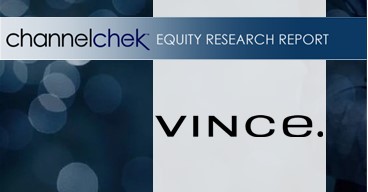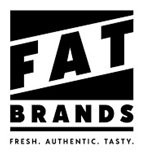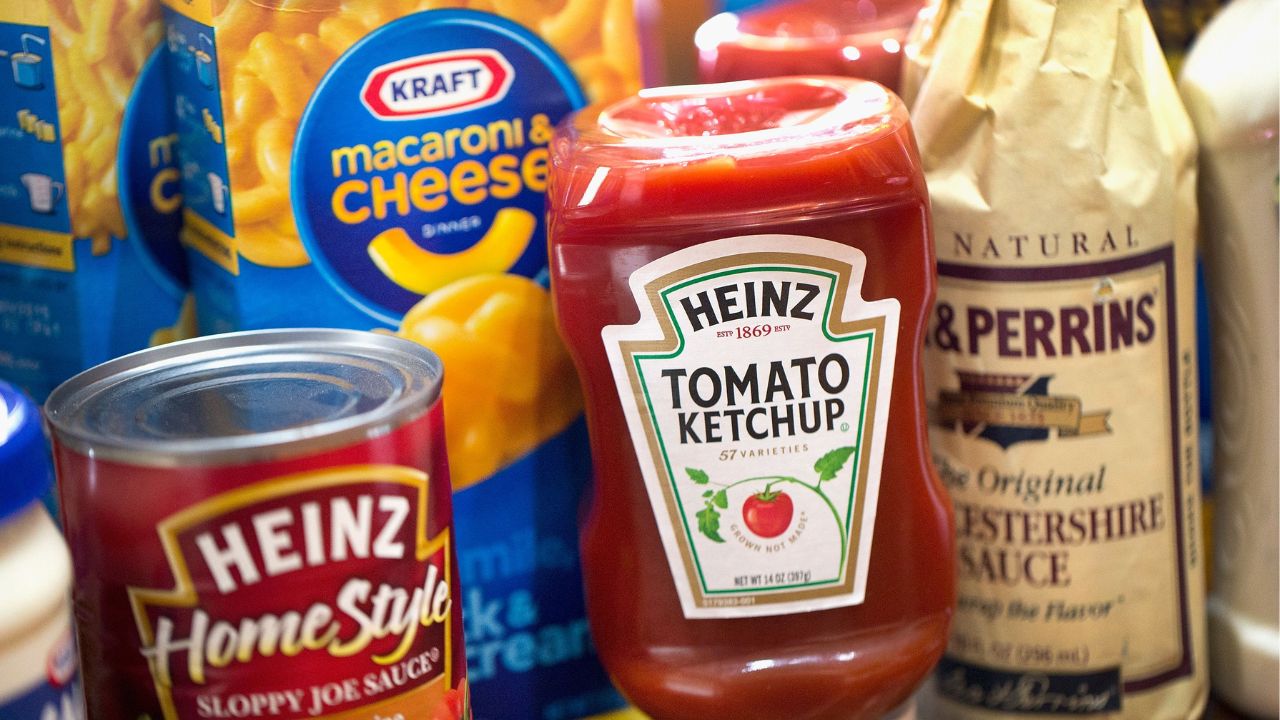Research News and Market Data on FLWS
Sep 04, 2025
Reports Fiscal Year 2025 Revenue of $1.69 Billion and a Net Loss of $200.0 Million, which Includes a $143.8 million Non-Cash Goodwill and Intangible Impairment Charge
JERICHO, N.Y.–(BUSINESS WIRE)– 1-800-FLOWERS.COM, Inc. (NASDAQ: FLWS), a leading provider of thoughtful expressions designed to help inspire customers to give more, connect more, and build more and better relationships, today reported results for its Fiscal 2025 fourth quarter and year ended June 29, 2025.
“I’m excited to have joined 1-800-FLOWERS.COM, Inc. at such a pivotal moment. This is an iconic brand with products people love, but we haven’t fully lived up to our potential in recent years. Customer expectations are shifting, technology is moving fast, and competition is evolving. That creates real opportunity. We’re making the company leaner and more agile, putting the customer at the center of everything we do, and using data to make smarter decisions. We’re sharpening how we attract and retain customers, broadening our reach beyond our e-commerce sites, and modernizing the customer experience. At the same time, we’re driving operational discipline, efficiency, and accountability. These changes will position us to get back to growth, deliver a better experience for our customers, and create long-term value for shareholders,” said Adolfo Villagomez, Chief Executive Officer.
Fiscal 2025 Fourth Quarter Performance
- Total consolidated revenues decreased 6.7% to $336.6 million, compared with total consolidated revenues of $360.9 million in the prior year period.
- Gross profit margin decreased 290 basis points to 35.5%, compared with 38.4% in the prior year period, primarily due to a highly promotional sales environment and deleveraging on the sales decline.
- Operating expenses increased $8.6 million to $174.8 million, as compared with the prior year period. Excluding non-recurring charges and the impact of the Company’s non-qualified deferred compensation plan in both periods, operating expenses declined $3.7 million as compared with the prior year to $159.7 million.
- Net loss for the quarter was ($51.9) million, or ($0.82) per share, as compared to a net loss of ($20.9) million, or ($0.32) per share in the prior year period.
- Adjusted Net Loss1 was ($43.8) million, or ($0.69) per share, compared with an Adjusted Net Loss1 of ($21.8) million, or ($0.34) per share, in the prior year period.
- Adjusted EBITDA1 loss for the quarter was ($24.2) million, as compared with an Adjusted EBITDA1 loss of ($8.8) million in the prior year period.
(1) Refer to “Definitions of Non-GAAP Financial Measures” and the tables attached at the end of this press release for reconciliation of non-GAAP results to applicable GAAP results.)
Fiscal Year 2025 Performance
- Total consolidated revenues decreased 8.0% to $1.69 billion, compared with total consolidated revenues of $1.83 billion in the prior year period.
- Gross profit margin was 38.7%, which includes $6.6 million of costs associated with the new order management system implementation that was launched during the holiday season. Excluding these costs, gross profit margin declined 100 basis points to 39.1%, as compared to the prior year, due to a highly promotional sales environment deleveraging on the sales decline.
- Operating expenses increased $120.3 million to $857.1 million, as compared with the prior year period. Excluding non-recurring charges and the impact of the Company’s non-qualified deferred compensation plan in both periods, operating expenses declined by $10.9 million to $695.2 million, as compared with the prior year.
- Net loss for the fiscal year was ($200.0) million, or ($3.13) per share, which includes a $143.8 million non-cash goodwill and intangible impairment charge, compared with a net loss of ($6.1) million, or ($0.09) per share, in the prior year period, which includes a non-cash impairment charge of $19.8 million.
- Adjusted Net Loss1 was ($52.5) million, or ($0.82) per share, compared with Adjusted Net Income1 of $11.6 million, or $0.18 per share, in the prior year period.
- Adjusted EBITDA1 for the fiscal year was $29.2 million, as compared with $93.1 million in the prior year period.
Segment Results
The Company provides Fiscal 2025 fourth quarter and full year selected financial results for its Gourmet Foods & Gift Baskets, Consumer Floral & Gifts, and BloomNet segments in the tables attached to this release and as follows:
- Gourmet Foods & Gift Baskets: For the quarter, revenues declined 3.6% to $101.4 million, as compared with the prior year period. Gross profit margin decreased 400 basis points from the prior year period to 26.0% on higher input costs and deleveraging on the sales decline. Excluding the impact of the severance costs in the current year, segment contribution margin1 loss was $19.0 million, compared with a loss of $14.4 million in the prior year period.
For the full fiscal year, revenue decreased 7.2% to $810.9 million. Excluding the impact of the order management system implementation issues, gross profit margin declined 70 basis points to 37.6%. Excluding non-recurring costs in both years, segment contribution margin1 for the year was $58.8 million, compared with $85.0 million in the prior year.
- Consumer Floral & Gifts: For the quarter, revenues declined 8.8% to $211.2 million, as compared with the prior year period. Gross profit margin decreased 230 basis points from the prior year period to 38.5% due to deleveraging on the sales decline. Excluding non-recurring costs in the current year, segment contribution margin1 was $17.4 million, compared with $25.7 million in the prior year period.
For the full fiscal year, revenues decreased 8.6% to $776.8 million, as compared with the prior year period. Gross profit margin decreased 150 basis points from the prior year period to 39.3% due to deleveraging on the sales decline. Excluding the non-recurring costs in both years, segment contribution margin1 was $50.5 million, compared with $87.7 million in the prior year.
- BloomNet: For the quarter, revenues declined 0.6% to $24.2 million, as compared with the prior year period. Gross profit margin decreased 280 basis points from the prior year period to 46.9%, due to higher florist fulfillment costs and rebates. Excluding the impact of the severance costs in the current year, segment contribution margin1 was $6.5 million, compared with $7.8 million in the prior year period.
For the year, revenues decreased 8.4% to $98.7 million, as compared with the prior year period. Gross profit margin increased 30 basis points from the prior year period to 48.5%, benefiting from lower florist rebates. Excluding the impact of the severance charges in both years, segment contribution margin1 for the year was $29.3 million, compared with $33.8 million in the prior year.
Fiscal 2026
The Company is approaching Fiscal Year 2026 as a pivotal period of foundation setting. By transforming 1-800-Flowers.com, Inc. into a customer-centric, data-driven organization with clear objectives and ROI-focused decision making, the Company aims to position itself to support its multi-year Celebrations Wave strategy and fuel future growth.
The Company’s strategic priorities are focused on positioning the organization for long-term growth. These priorities include:
- driving cost savings and organizational efficiency,
- building a customer-centric and data-driven organization,
- broadening our reach beyond our e-commerce sites into new channels, and
- strengthening our team through enhanced talent and accountability.
With a renewed commitment to agility and customer-centricity, the Company believes these foundational steps will set the stage for sustainable revenue and profit growth in the years to come.
Conference Call
The Company will conduct a conference call to discuss its financial results today, September 4, 2025, at 8:00 a.m. (ET). The conference call will be webcast from the Investors section of the Company’s website at www.1800flowersinc.com. A recording of the call will be posted on the Investors section of the Company’s website within two hours of the call’s completion.
Definitions of non-GAAP Financial Measures:
We sometimes use financial measures derived from consolidated financial information, but not presented in our financial statements prepared in accordance with U.S. generally accepted accounting principles (“GAAP”). Certain of these are considered “non-GAAP financial measures” under the U.S. Securities and Exchange Commission rules. Non-GAAP financial measures referred to in this document are either labeled as “non-GAAP,” “adjusted” or designated as such with a “1”. See below for definitions and the reasons why we use these non-GAAP financial measures. Where applicable, see the Selected Financial Information below for reconciliations of these non-GAAP measures to their most directly comparable GAAP financial measures. Reconciliations for forward-looking figures would require unreasonable efforts at this time because of the uncertainty and variability of the nature and amount of certain components of various necessary GAAP components, including, for example, those related to compensation, tax items, amortization or others that may arise during the year, and the Company’s management believes such reconciliations would imply a degree of precision that would be confusing or misleading to investors. For the same reasons, the Company is unable to address the probable significance of the unavailable information. The lack of such reconciling information should be considered when assessing the impact of such disclosures.
EBITDA and Adjusted EBITDA:
We define EBITDA as net income (loss) before interest, taxes, depreciation, and amortization. Adjusted EBITDA is defined as EBITDA adjusted for the impact of stock-based compensation, Non-Qualified Deferred Compensation Plan (“NQDC”) investment appreciation/depreciation, and for certain items affecting period-to-period comparability. See Selected Financial Information for details on how EBITDA and Adjusted EBITDA were calculated for each period presented. The Company presents EBITDA and Adjusted EBITDA because it considers such information meaningful supplemental measures of its performance and believes such information is frequently used by the investment community in the evaluation of similarly situated companies. The Company uses EBITDA and Adjusted EBITDA as factors to determine the total amount of incentive compensation available to be awarded to executive officers and other employees. The Company’s credit agreement uses EBITDA and Adjusted EBITDA-related items to determine its interest rate and to measure compliance with certain covenants. EBITDA and Adjusted EBITDA are also used by the Company to evaluate and price potential acquisition candidates. EBITDA and Adjusted EBITDA have limitations as analytical tools and should not be considered in isolation or as a substitute for analysis of the Company’s results as reported under GAAP. Some of the limitations are: (a) EBITDA and Adjusted EBITDA do not reflect changes in, or cash requirements for, the Company’s working capital needs; (b) EBITDA and Adjusted EBITDA do not reflect the interest expense, or the cash requirements necessary to service interest or principal payments, on the Company’s debts; and (c) although depreciation and amortization are non-cash charges, the assets being depreciated and amortized may have to be replaced in the future and EBITDA does not reflect any cash requirements for such capital expenditures. EBITDA and Adjusted EBITDA should only be used on a supplemental basis combined with GAAP results when evaluating the Company’s performance.
Segment Contribution Margin and Adjusted Segment Contribution Margin
We define Segment Contribution Margin as earnings before interest, taxes, depreciation, and amortization, before the allocation of corporate overhead expenses. Adjusted Segment Contribution Margin is defined as Segment Contribution Margin adjusted for certain items affecting period-to-period comparability. See Selected Financial Information for details on how Segment Contribution Margin and Adjusted Segment Contribution Margin were calculated for each period presented. When viewed together with our GAAP results, we believe Segment Contribution Margin and Adjusted Segment Contribution Margin provide management and users of the financial statements meaningful information about the performance of our business segments. Segment Contribution Margin and Adjusted Segment Contribution Margin are used in addition to and in conjunction with results presented in accordance with GAAP and should not be relied upon to the exclusion of GAAP financial measures. The material limitation associated with the use of Segment Contribution Margin and Adjusted Segment Contribution Margin is that they are an incomplete measure of profitability as they do not include all operating expenses or non-operating income and expenses. Management compensates for this limitation when using these measures by looking at other GAAP measures, such as Operating Income and Net Income.
Adjusted Net Income (Loss) and Adjusted or Comparable Net Income (Loss) Per Common Share:
We define Adjusted Net Income (Loss) and Adjusted or Comparable Net Income (Loss) Per Common Share as Net Income (Loss) and Net Income (Loss) Per Common Share adjusted for certain items affecting period-to-period comparability. See Selected Financial Information below for details on how Adjusted Net Income (Loss) Per Common Share and Adjusted or Comparable Net Income (Loss) Per Common Share were calculated for each period presented. We believe that Adjusted Net Income (Loss) and Adjusted or Comparable Net Income (Loss) Per Common Share are meaningful measures because they increase the comparability of period-to-period results. Since these are not measures of performance calculated in accordance with GAAP, they should not be considered in isolation of, or as a substitute for, GAAP Net Income (Loss) and Net Income (Loss) Per Common Share, as indicators of operating performance and they may not be comparable to similarly titled measures employed by other companies.
Free Cash Flow:
We define Free Cash Flow as net cash provided by (used in) operating activities less capital expenditures. The Company considers Free Cash Flow to be a liquidity measure that provides useful information to management and investors about the amount of cash generated by the business after the purchases of fixed assets, which can then be used to, among other things, invest in the Company’s business, make strategic acquisitions, strengthen the balance sheet, and repurchase stock or retire debt. Free Cash Flow is a liquidity measure that is frequently used by the investment community in the evaluation of similarly situated companies. Since Free Cash Flow is not a measure of performance calculated in accordance with GAAP, it should not be considered in isolation or as a substitute for analysis of the Company’s results as reported under GAAP. A limitation of the utility of Free Cash Flow as a measure of financial performance is that it does not represent the total increase or decrease in the Company’s cash balance for the period.
About 1-800-FLOWERS.COM, Inc.
1-800-FLOWERS.COM, Inc. is a leading provider of thoughtful expressions designed to help inspire customers to share more, connect more, and build more and better relationships. The Company’s e-commerce business platform features an all-star family of brands, including: 1-800-Flowers.com®, 1-800-Baskets.com®, CardIsle®, Cheryl’s Cookies®, Harry & David®, PersonalizationMall.com®, Shari’s Berries®, FruitBouquets.com®, Things Remembered®, Moose Munch®, The Popcorn Factory®, Wolferman’s Bakery®, Vital Choice®, Simply Chocolate® and Scharffen Berger®. Through the Celebrations Passport® loyalty program, which provides members with free standard shipping and no service charge on eligible products across our portfolio of brands, 1-800-FLOWERS.COM, Inc. strives to deepen relationships with customers. The Company also operates BloomNet®, an international floral and gift industry service provider offering a broad-range of products and services designed to help members grow their businesses profitably; Napco℠, a resource for floral gifts and seasonal décor; DesignPac Gifts, LLC, a manufacturer of gift baskets and towers; and Alice’s Table®, a lifestyle business offering fully digital on demand floral, culinary and other experiences to guests across the country. 1-800-FLOWERS.COM, Inc. was recognized among America’s Most Trustworthy Companies by Newsweek for 2024. 1-800-FLOWERS.COM, Inc. was also recognized as one of America’s Most Admired Workplaces for 2025 by Newsweek and was named to the Fortune 1000 list in 2022. Shares in 1-800-FLOWERS.COM, Inc. are traded on the NASDAQ Global Select Market, ticker symbol: FLWS. For more information, visit 1800flowersinc.com.
FLWS–COMP
FLWS-FN
Special Note Regarding Forward Looking Statements:
This press release contains forward-looking statements within the meaning of the Private Securities Litigation Reform Act of 1995. These forward-looking statements represent the Company’s current expectations or forecasts concerning future events; they do not relate strictly to historical or current facts. Such statements can generally be identified by words such as “anticipate,” “estimate,” “expect,” “project,” “intend,” “plan,” “believe,” “foresee,” “forecast,” “likely,” “should,” “will,” “target,” or similar words or phrases. These forward-looking statements are subject to risks, uncertainties, and other factors, many of which are outside of the Company’s control, which could cause actual results to differ materially from the results expressed or implied in the forward-looking statements, including, but not limited to, statements relating to future actions; the Company’s ability to leverage its operating platform and reduce its operating expense ratio; its ability to successfully integrate acquired businesses and assets; its ability to successfully execute its strategic priorities; its ability to cost effectively acquire and retain customers and drive purchase frequency; the outcome of contingencies, including legal proceedings in the normal course of business; its ability to compete against existing and new competitors; its ability to manage expenses associated with sales and marketing and necessary general and administrative and technology investments; its ability to reduce promotional activities and achieve more efficient marketing programs; and general consumer sentiment and industry and economic conditions that may affect levels of discretionary customer purchases of the Company’s products. The Company cannot guarantee that any forward-looking statement will be realized. Achievement of future results is subject to risk, uncertainties and potentially inaccurate assumptions. Should known or unknown risks or uncertainties materialize, or should underlying assumptions prove inaccurate, actual results could differ materially from past results and those anticipated, estimated or projected. You should bear this in mind as you consider forward-looking statements. The Company undertakes no obligation to publicly update any of the forward-looking statements, whether because of new information, future events or otherwise, made in this release or in any of its SEC filings. Consequently, you should not consider any such list to be a complete set of all potential risks and uncertainties. For a more detailed description of these and other risk factors, refer to the Company’s SEC filings, including the Company’s Annual Reports on Form 10-K and its Quarterly Reports on Form 10-Q.
View full release here.





















